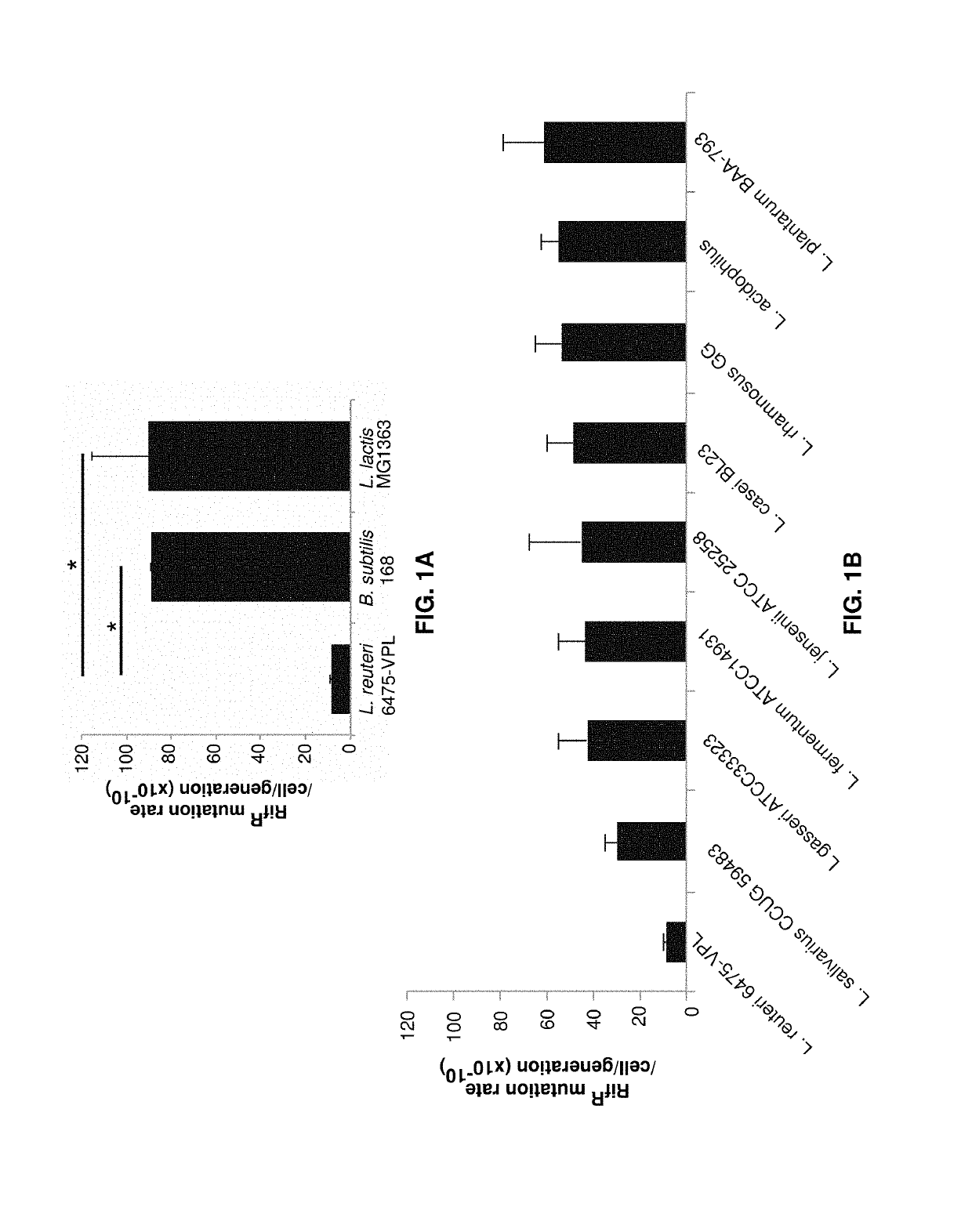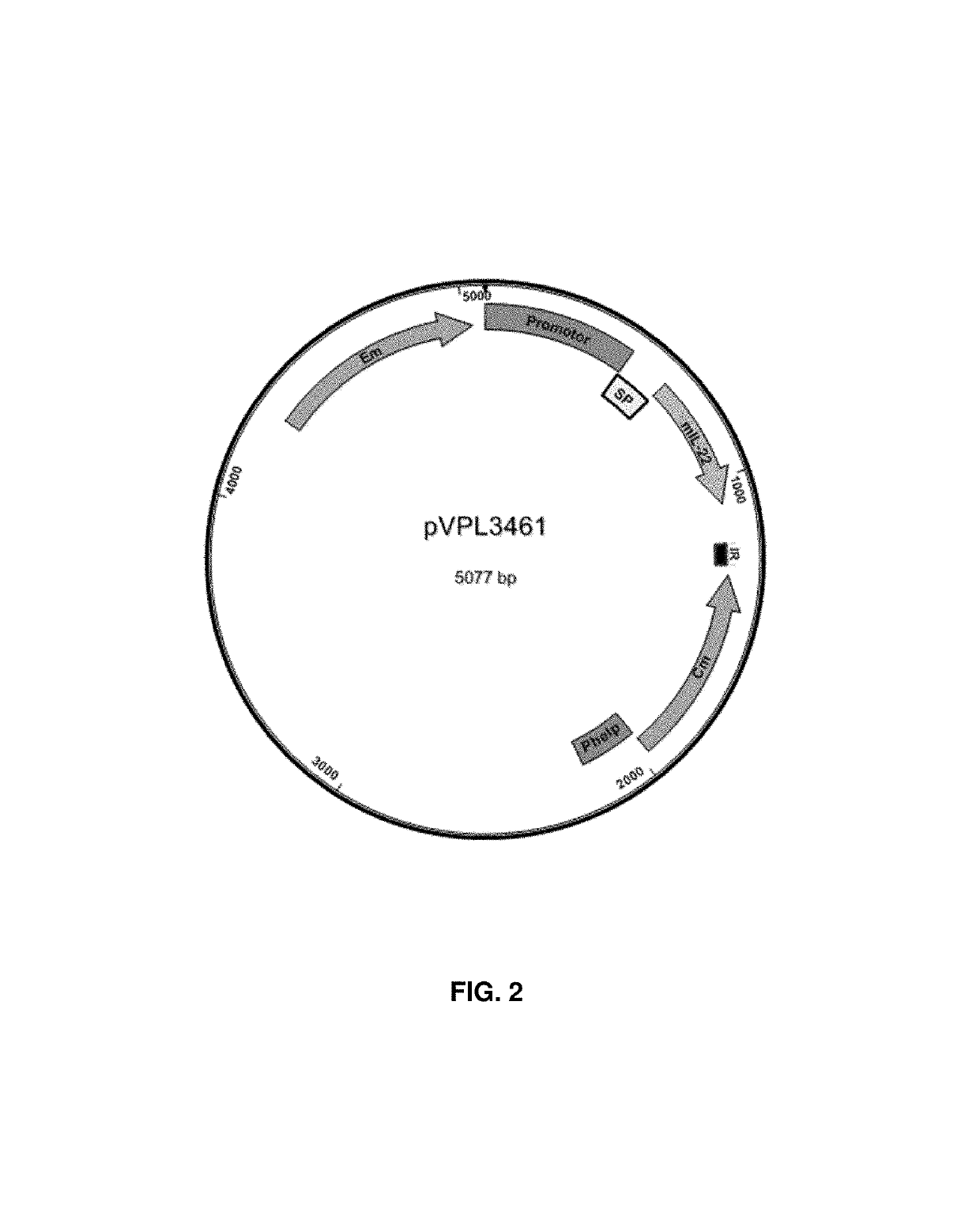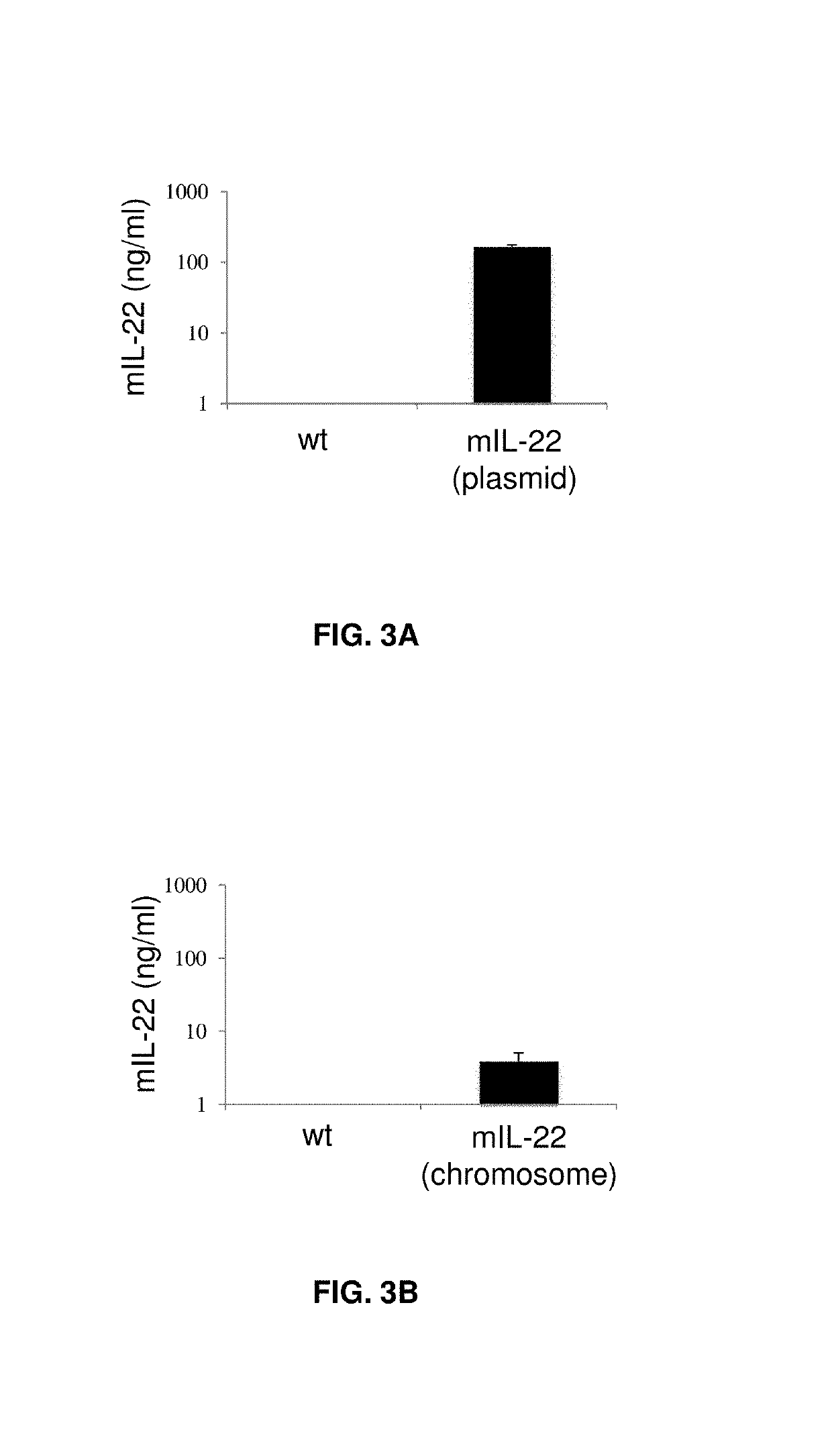Methods for systemically delivering polypeptides and microorganisms therefor
a technology of polypeptides and microorganisms, applied in the field of systemically delivering polypeptides and microorganisms therefor, can solve the problems of inability to systemically introduce such polypeptides to subjects, inability to administer polypeptides in oral administration, and inability to achieve systemic increase of polypeptides delivered via i>lactococcus lactis/i>
- Summary
- Abstract
- Description
- Claims
- Application Information
AI Technical Summary
Benefits of technology
Problems solved by technology
Method used
Image
Examples
examples
Bacterial strains, plasmids, media, and culture.
[0083]Bacterial strains and plasmids used in the present examples are listed in Table 1. Lactobacillus reuteri VPL1014 and its derivatives were routinely cultured at 37° C. in deMan Rogosa Sharpe (MRS) medium (Difco, BD Biosciences). Where appropriate, erythromycin was added to a final concentration of 5 μg / ml. Competent cells of L. reuteri were prepared as described before (Ahrnd et al. 1992). To test IL-22 expression and to prepare bacteria for animal experiments, bacteria were cultured in Lactobacilli Defined Medium-III (LDM-III, Table 2).
[0084]Specifically, L. reuteri VPL1014 was inoculated in 10 ml MRS broth, and L. reuteri VPL3461 was inoculated in 10 ml MRS containing 5 g / ml erythromycin at 37° C. Overnight-cultures of each strain were sub-cultured in MRS at OD600=0.1. At OD600≥1≤1.2 cells were harvested by centrifugation (5,000 rpm for 5 min), and the cell pellets were washed twice with LDM-III. Washed cell pellets, each derive...
PUM
| Property | Measurement | Unit |
|---|---|---|
| time | aaaaa | aaaaa |
| time | aaaaa | aaaaa |
| concentration | aaaaa | aaaaa |
Abstract
Description
Claims
Application Information
 Login to View More
Login to View More - R&D
- Intellectual Property
- Life Sciences
- Materials
- Tech Scout
- Unparalleled Data Quality
- Higher Quality Content
- 60% Fewer Hallucinations
Browse by: Latest US Patents, China's latest patents, Technical Efficacy Thesaurus, Application Domain, Technology Topic, Popular Technical Reports.
© 2025 PatSnap. All rights reserved.Legal|Privacy policy|Modern Slavery Act Transparency Statement|Sitemap|About US| Contact US: help@patsnap.com



